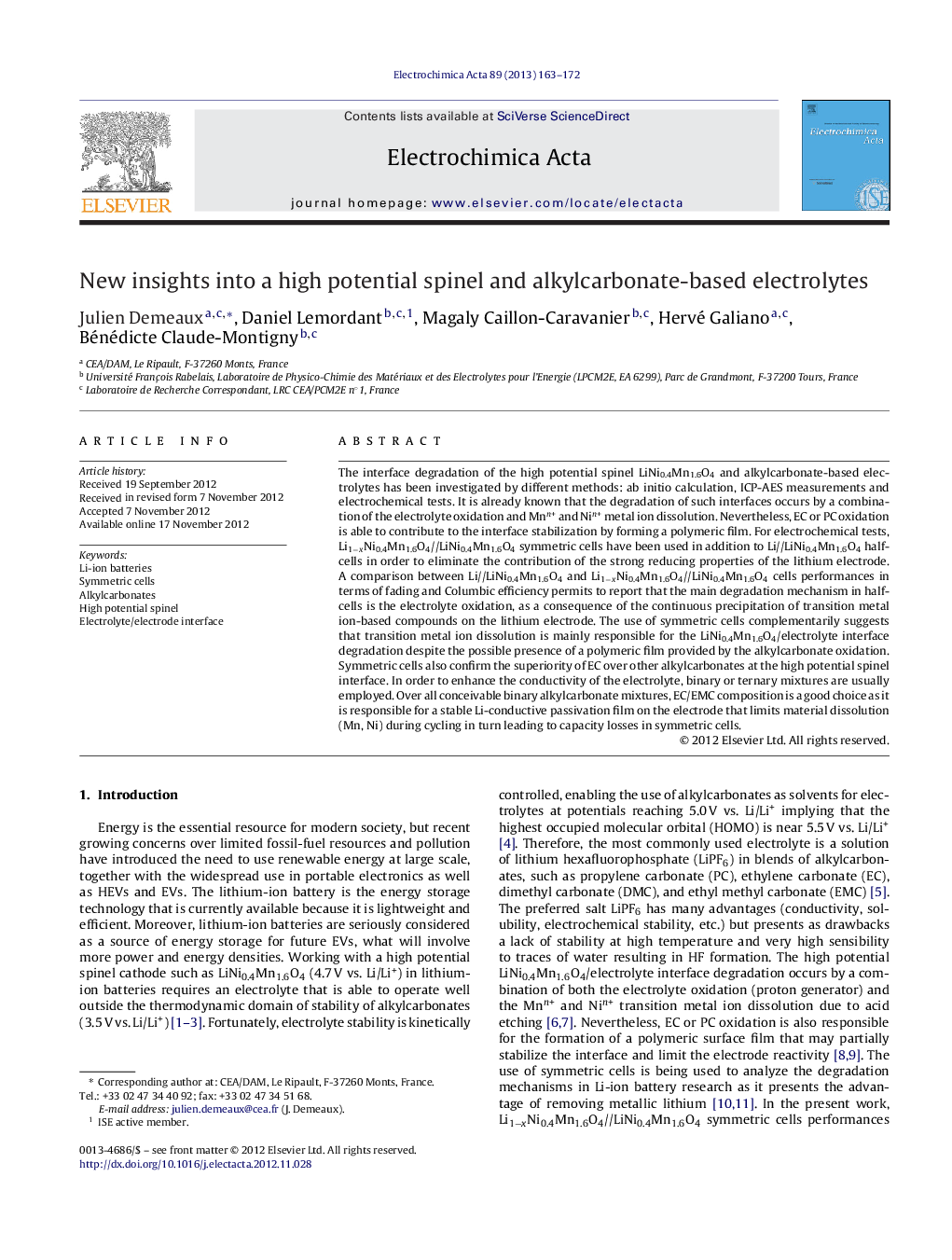| کد مقاله | کد نشریه | سال انتشار | مقاله انگلیسی | نسخه تمام متن |
|---|---|---|---|---|
| 187586 | 459646 | 2013 | 10 صفحه PDF | دانلود رایگان |

The interface degradation of the high potential spinel LiNi0.4Mn1.6O4 and alkylcarbonate-based electrolytes has been investigated by different methods: ab initio calculation, ICP-AES measurements and electrochemical tests. It is already known that the degradation of such interfaces occurs by a combination of the electrolyte oxidation and Mnn+ and Nin+ metal ion dissolution. Nevertheless, EC or PC oxidation is able to contribute to the interface stabilization by forming a polymeric film. For electrochemical tests, Li1−xNi0.4Mn1.6O4//LiNi0.4Mn1.6O4 symmetric cells have been used in addition to Li//LiNi0.4Mn1.6O4 half-cells in order to eliminate the contribution of the strong reducing properties of the lithium electrode. A comparison between Li//LiNi0.4Mn1.6O4 and Li1−xNi0.4Mn1.6O4//LiNi0.4Mn1.6O4 cells performances in terms of fading and Columbic efficiency permits to report that the main degradation mechanism in half-cells is the electrolyte oxidation, as a consequence of the continuous precipitation of transition metal ion-based compounds on the lithium electrode. The use of symmetric cells complementarily suggests that transition metal ion dissolution is mainly responsible for the LiNi0.4Mn1.6O4/electrolyte interface degradation despite the possible presence of a polymeric film provided by the alkylcarbonate oxidation. Symmetric cells also confirm the superiority of EC over other alkylcarbonates at the high potential spinel interface. In order to enhance the conductivity of the electrolyte, binary or ternary mixtures are usually employed. Over all conceivable binary alkylcarbonate mixtures, EC/EMC composition is a good choice as it is responsible for a stable Li-conductive passivation film on the electrode that limits material dissolution (Mn, Ni) during cycling in turn leading to capacity losses in symmetric cells.
Journal: Electrochimica Acta - Volume 89, 1 February 2013, Pages 163–172